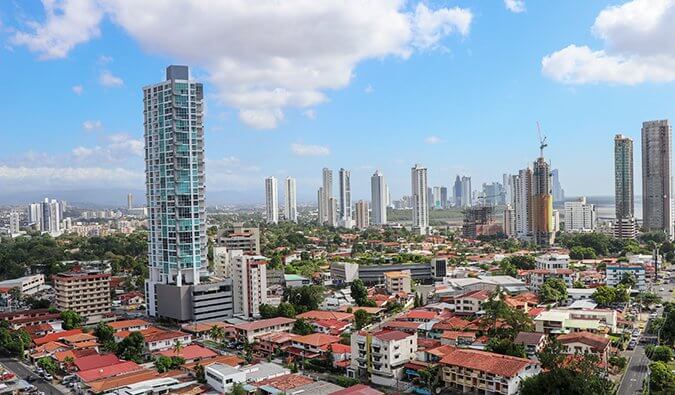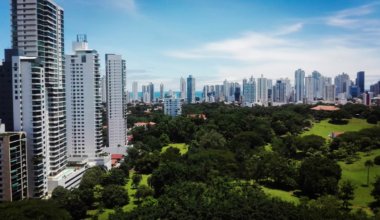
Last Updated: 9/4/2023 | September 4th, 2023
I have a confession: I’m not a coffee drinker. I think the last time I had coffee was about five years ago. The only way I like coffee is when you add in all those other flavors, milk, and whipped cream because it masks the coffee taste and makes it drinkable to me.
I simply hate the bitterness of coffee.
There’s only been one time I enjoyed a cup of java. It was back in 2003 when I was in Costa Rica, exploring the cloud forest in Monteverde. The organic, shade-grown coffee I had there was like drinking chocolate, and I couldn’t get enough of it. I bought a bag to take home and drank it every day.
So when my friends wanted to tour a coffee plantation in Boquete, Panama, I was less than enthused. “Can’t we go hiking instead?” I asked.
“No, we’re doing the coffee tour,” they replied.
We had hiked the previous day and they wanted to do something different. I grumbled, but reluctantly I agreed. Maybe learning about coffee might be better than actually drinking it. Maybe the coffee would be just as good as I had in Costa Rica.
About Panamanian Coffee
Panama is up with Colombia, Peru, and Costa Rica when it comes to quality coffee. The best coffee can be found in the Chiriquí highlands, where the volcanic soil, climate, and elevation are perfect for growing coffee.
Boquete, Cerro Punta, and Volcan produce the highly sought-after Geisha bean, one of the most expensive beans in the world, which regularly sell for over hundreds of dollars per pound. Prices can skyrocket as high as $2,700 USD per pound at auction for the best, most sought-after beans (from the award-winning family plantation, Hacienda La Esmeralda).
While today Panama produces some of the highest-quality, most expensive beans in the world, it wasn’t always like that. Coffee wasn’t brought to Panama until the early 19th century when European settlers started colonizing the region. But it wasn’t until the early 2000s that Panamanian coffee started to get recognized on the international coffee scene.
Today, many growers offer tours around their plantations, where you can see all the process from picking the berries, roasting and grinding, and have a tasting.
My Experience on a Coffee Tour in Panama
So how was it?
I loved it!
Usually, all coffee tastes the same to me, but the Geisha beans really did have a much more palatable taste. They’re less acidic than other kinds of coffee beans, with a smooth, floral, and aromatic flavor. I can see why they’re so popular.
Not only did I enjoy the coffee (which was surprising, I confess) but I learned about how Panamanians grow coffee and what makes their coffee and style unique. Panama aims for quality over quantity — which is something I can definitely vouch for after tasting their aromatic brew.
Here’s a video from my coffee tour in Boquete:
Visiting a Coffee Plantation in Panama: The Logistics
Coffee production in Panama is centered in the highlands of the Chiriquí Province, about 480 kilometers (300 miles) from Panama City. There are three main highland regions: Tierras Altas (includes Volcan, Bambito and Cerro Punta), Renacimiento, and Boquete (the most built up and well-known internationally). To get here, you can either drive (7 hours), take a bus (7-8 hours), or fly to David (less than one hour), the region’s main city, and take a bus from there to the highlands.
To help visitors plan their trip, the Panama Tourism Board has created a Coffee Circuit highlighting 15 of the best farms in the region that offer tours.
Most coffee plantation tours are half-day tours that last 3-5 hours. Expect to pay between $20-35 USD per person for a tour, depending on the tour and plantation you’re visiting. Tours usually include a coffee tasting, a tour of the plantation, as well as transportation to and from the plantation from your accommodation. Many plantations also have guesthouses where you can stay overnight if you want an extended visit.
Boquete is the best place to start as it’s the most built-up town, with the most plantations offering tours. You can usually book them through any hostel or from the tour shops in the center of town. There are so many available that you can often leave the same day if you want!
Here are some of the best coffee plantations to visit in Boquete:
- Finca Lerida – $35 USD per person. +507-720-1111, fincalerida.com
- Cafe Ruiz – $20 USD per person. +507-730-9575, caferuiz-boquete.com
- Finca Dos Jefes – $30 USD per person. +507 6591 3522, boquetecoffeetour.com/coffee-tours
- Finca Casanga – $35 USD per person. +507-6990-0651, buypanamacoffee.com/tours
Here are some of the best coffee plantations to visit in Tierras Altas:
- Janson Coffee farm – $15 USD for just a tasting and $35 USD for the complete coffee tour. +507-6867-3884, jansoncoffee.com
- Finca Nueva Suiza Hermanos Lara – $35 USD per person. +507-6587-4349, circuitodelcafe.com
In Renacimiento, there’s just one farm currently offering tours:
- Finca Café de Eleta – $25 USD per person (also offers just a tasting session for $10 USD). cafeeleta.com
There are a lot of coffee plantation tours throughout this area of Panama. In fact, you couldn’t walk a block in Boquete without finding a coffee shop!
Even if you’re not a huge fan of drinking coffee, I would still encourage you to take a plantation tour when visiting Panama. Not only will you learn a lot about the process but you’ll learn about how coffee is grown and how it has impacted the development of this tiny Central American nation.
Book Your Trip to Panama: Logistical Tips and Tricks
Book Your Flight
Use Skyscanner to find a cheap flight. They are my favorite search engine because they search websites and airlines around the globe so you always know no stone is left unturned.
Book Your Accommodation
You can book your hostel with Hostelworld as they have the biggest inventory and best deals. If you want to stay somewhere other than a hostel, use Booking.com as they consistently return the cheapest rates for guesthouses and cheap hotels.
Don’t Forget Travel Insurance
Travel insurance will protect you against illness, injury, theft, and cancellations. It’s comprehensive protection in case anything goes wrong. I never go on a trip without it as I’ve had to use it many times in the past. My favorite companies that offer the best service and value are:
- Safety Wing (for everyone below 70)
- Insure My Trip (for those over 70)
- Medjet (for additional repatriation coverage)
Looking for the Best Companies to Save Money With?
Check out my resource page for the best companies to use when you travel. I list all the ones I use to save money when I’m on the road. They will save you money when you travel too.
Looking for more information on visiting Panama?
Be sure to visit our robust destination guide to Panama for more planning tips!

